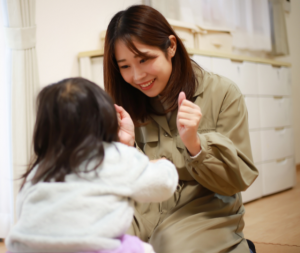Let’s Talk Toilet Training: Tips for Success
We often hear from parents about the ongoing difficulties they face with toilet training. To help with this often-frustrating process, we’ve put together nine tips to help you, and your child have success with toilet training!
Wait until the Child is Ready
Signs that your child is ready for toilet training include:
- Staying dry for at least two hours at a time during the day.
- Showing awareness of when they are wet or soiled.
- Pausing when wetting or soiling.
Make Toilet Training Fun
Make going into the bathroom fun for your child. Celebrate being in the bathroom with your child which could include singing, dancing or bringing a favourite book or toy. Initially let your child get used to the bathroom without placing any demands so they associate the bathroom with a positive experience. If your child will not sit on the toilet, work on sitting on the toilet before continuing with toilet training.
Use Visual Aids
Many children respond better to visual aids rather than verbal instructions. Use clear and simple pictures or visual prompts simultaneously with a short verbal prompt (for example “Time for toilet”) to help your child understand what is expected. Less is more! It is recommended to use a visual schedule with pictures for the steps, for example sitting on the toilet, wiping and flushing. You can take pictures of items in your bathroom or find pictures online that you can print out.
Use a Reinforcer
Identify some activities, toys or small treats that will motivate your child and reserve these for rewarding your child’s toileting successes. Make sure that your child only gets this reinforcer for toileting success and at no other times. Deliver the reinforcer as soon as possible after any success. Include a picture of the reinforcer in your child’s visual schedule or use a “First-Then” board to illustrate “First toilet, and then …..” Cheer on your child’s success! You may need to change the reinforcer occasionally to keep it highly motivating for your child.
Be Aware of Sensory Preferences & Sensitivities
Your child may have sensory sensitivities aggravated by aspects of toilet training, such as the cold bathroom floor, the noise the toilet makes while flushing, the noise of the fan, the hole in the toilet seat or the need to frequently take clothing on and off. Listen to your child and observe their behaviour to determine what’s making them uncomfortable, then provide adaptations where you can. For example, a foot stool may help the child who dislikes the cold bathroom tiles; noise-reducing headphones may be helpful for children who are sensitive to noise; and using a toilet seat reducer ring may improve your child’s comfort sitting on the toilet seat. Children who are toilet training benefit from soft, comfortable clothing without buttons or zippers, so they are easy to pull on/off.
Establish a Routine
Consistency is key when it comes to toilet training. Establish a routine that includes scheduled bathroom trips spaced frequently throughout the day. Using a timer may assist with the transition to the bathroom. Social stories that describe the daily routine including bathroom breaks and using the toilet may be helpful in having the child become familiar with the new routine. Everyone that does toileting with your child will need to know and follow the same routine and use the same visuals/prompts to ensure training is consistent.
Bye-bye Diapers
Although this seems to be an intimidating step, move your child into underwear as soon as possible. Wearing underwear helps the child associate accidents with the discomfort of wetness on their skin. When your child does have an accident, minimize discussing the accident and fussing – instead provide only a brief reminder, for example, “pee goes in the toilet” along with showing the visual (picture of the toilet). Save your attention for when the child attempts to use the toilet. There will be many accidents and frustrations along the journey to toileting success – patience is key! Start to practice toileting when it is a good time for you and your family. That way, you will have the energy to work on this important skill over the long haul.
Take One Step at a Time
First, work only on peeing in the toilet, then once this routine is successful and firmly established for a period of time, then start working on pooping on the toilet. Teach boys to sit on the toilet to urinate at least until they are regularly having bowel movements on the toilet.
If Needed, Get Professional Help
An Occupational Therapist or Behavioural Therapist can help with toilet training by developing a toilet-training plan that is tailored to the child’s individual needs and abilities. If toileting problems persist, it is recommended to consult with your child’s doctor to rule out any medical concerns.
Kathryn Adeli, OT Reg. (Ont.)
ACT Learning Centre, Occupational Therapist



